Like so many photographers during 2020, I was seeking a way to use photography to personally respond to the Covid-19 pandemic. Inspiration finally struck as England first came out of lockdown in June. I wanted to represent my mixed feelings about the government imposed restrictions to stop the deadly virus spreading, versus the social and economic impacts of the unprecedented limitations upon our daily lives. This street photography project idea also enabled me to use my father’s collection of vintage cameras and out-of-date black and white film.
The camera that I have chosen to use for the project so far is a soviet era Zorki-4K with a Jupiter-8 50mm f/2 lens. I am not sure when my father acquired it, presumably when they were in production between 1972 and 1978. When I inherited it the shutter was jammed. I suspected that somebody had changed shutter speed without winding the film on. Sentimental value made it worth getting it fixed and CLA’d by a soviet camera repair specialist in London but even he was not sure what had caused the jam.
My father’s collection also included a selection of unused bulk film. Some had been loaded into canisters and thankfully he had labelled them. I settled upon using some HP5, the original version, not HP5 Plus, so that must date from between 1976 and 1989. It was all quite experimental because I was not sure if the badly stored film would still be useable and, despite lacking experience, I planned to develop and digitise the film myself.
The old film would be less sensitive to light, requiring slower shutter speeds and enabling creative blurred motion effects. This was good because I wanted to show the hustle and bustle of city life, which had returned so soon after everybody had been locked down and in fear for their lives. How much less sensitive to light was unknown, and I was not sure how slow the shutter speed would have to be to achieve the desired blurring. I had a suspicion that I would be needing the 1 second and half-a-second shutter speeds that the Zorki-4K provided, unlike some other soviet era cameras. So I decided, rather than shoot an entire roll of 36 shots on this experiment, to have a go at loading my own bulk roll of 16 shots.
This photograph, showing Exchange Square in Manchester (UK), is my favourite from that first roll. It achieves my initial goals of proving the film still worked. I also had a good exposure, and the right amount of blur. The content is what I had in mind as well: restaurants full of people, and others sitting and walking around as if things were back to normal. It was at this point that I began to see the blurred people as representing the ghosts of those who had died of Covid, moving amongst those who had been more fortunate.
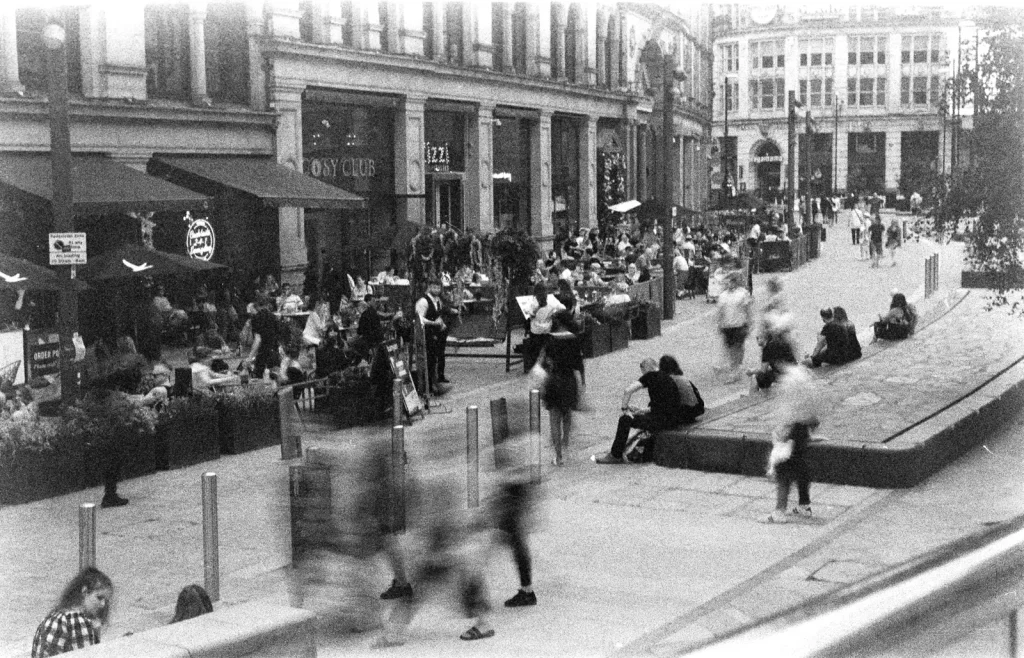
Knowing that I would be processing old film in the near future, I started my film developing career with Kodak HC-110 as it has a reputation of reducing fog on old film. I achieved initial success with developing a couple of regular rolls of film, using standard methods. My next step was trying semi-stand development, with film that I had found left in a purchased camera. This was not so successful and the negatives had what I think are bromide streaks. So, for the project, I read forums, asked for advice, etc., finally deciding to overexpose 4 stops (one for every decade) and develop at a normal dilution and time. This went well, apart from a schoolboy error when loading the film spool that led to film being in contact with film and a few frames not receiving enough of the chemicals.
My DSLR scanning setup was quite basic, using the film holder from an enlarger raised above a mobile phone displaying a white screen at full brightness. I mustn’t have had the light source lined up quite right to the negative because less light reached the top of the picture, causing the final positive image being brighter at the top. I don’t mind too much as it gives the image sort of a historic feel to it. Besides, the first lesson that I learnt from this first test roll is that I needed something in the frame that indicated the pandemic, otherwise it looks like just a normal day in Manchester.
Lesson two was that the Zorki-4K viewfinder does not have frame lines, making it difficult to compose the photograph, especially if you wear glasses so you do not see the whole view window. As a solution, a KMZ turret viewfinder was purchased, making sure to buy one that bent in the right direction to not obstruct the Zorki speed dial. I must say that I was very impressed by the clear view through each of the focal lengths provided by the viewfinder. Definitely a good investment. An added feature is that having it stuck on top of your camera attracts curious strangers! Next time I might take a second camera to capture some street portraits of these inquisitive people.
The photographs at the end of the article are a selection from my second and third rolls of film. The scanning illumination is more even thanks to placing the mobile phone light source within a white box and generally paying more attention to how it was aligned.
Lesson three of this project is that I need to have the ‘Please wear a mask’ signs (or other Covid signifiers) quite large in the frame. You can probably pick out some of the photos from the second roll: the link to Covid-19 is certainly present but perhaps not always obvious enough. Changing to a less grainy film would go some way to alleviate the issue, but I hope to achieve a reasonably consistent set of images.
My next roll will probably be with my father’s Canon AE-1. Hopefully its telephoto zoom lens will help in situations where I am not able to get the tripod close enough. I try to avoid blocking people’s passage during the zen-like several minutes I often need to take a picture. It is relaxing for me to work through the process of measuring the light, setting up the camera, and waiting for a good composition of people to happen.
Lesson four, from feedback from friends and my mentor Victoria Fox, is that less is more – several of my rejected photographs are too ‘busy’. Perhaps crowded street scenes were the wrong direction to go in.
Lesson five, from another photographic friend, is that there is a more positive potential theme for the project, which is that life can continue even during the pandemic. I am not against this interpretation, as I still have mixed feelings about that dilemma faced by public authorities, so I may end up with an alternative presentation of the project that represents that point of view.
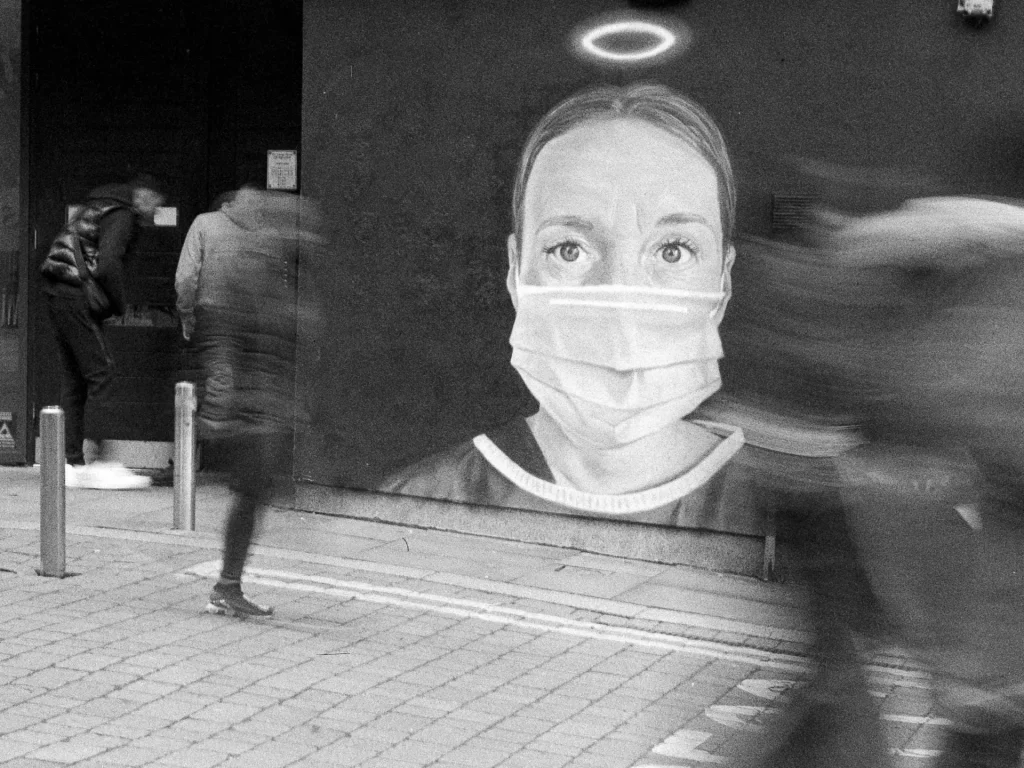
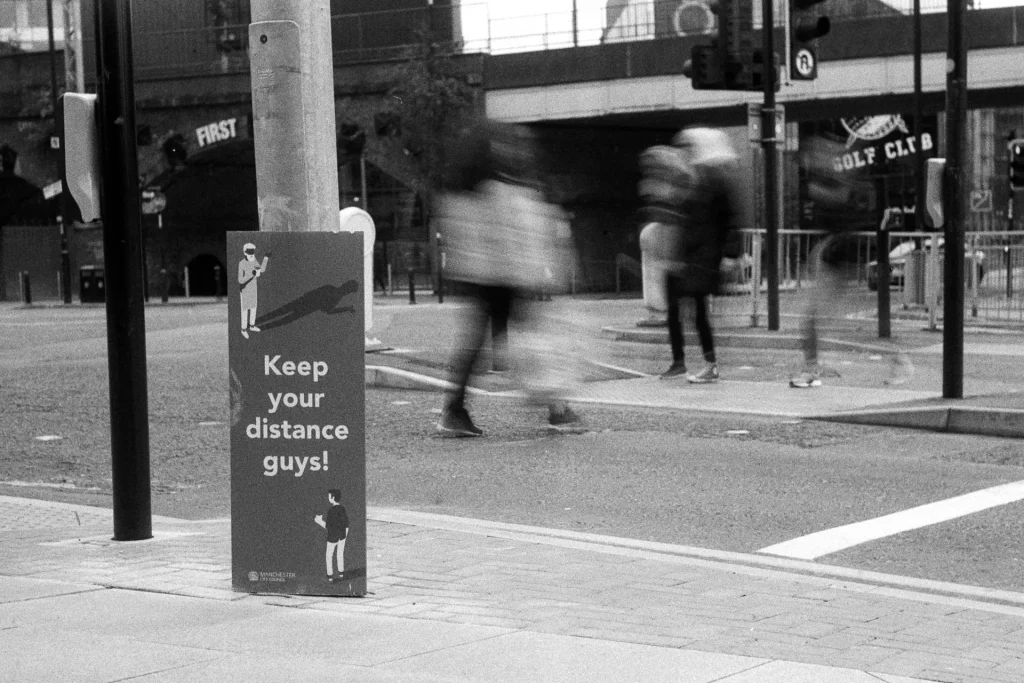
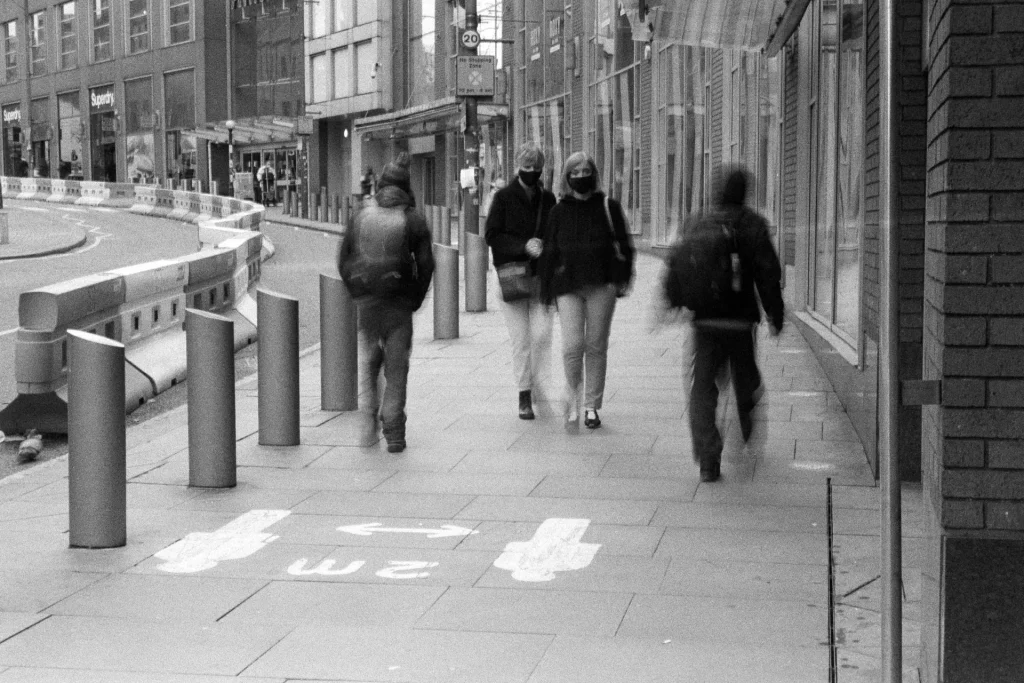
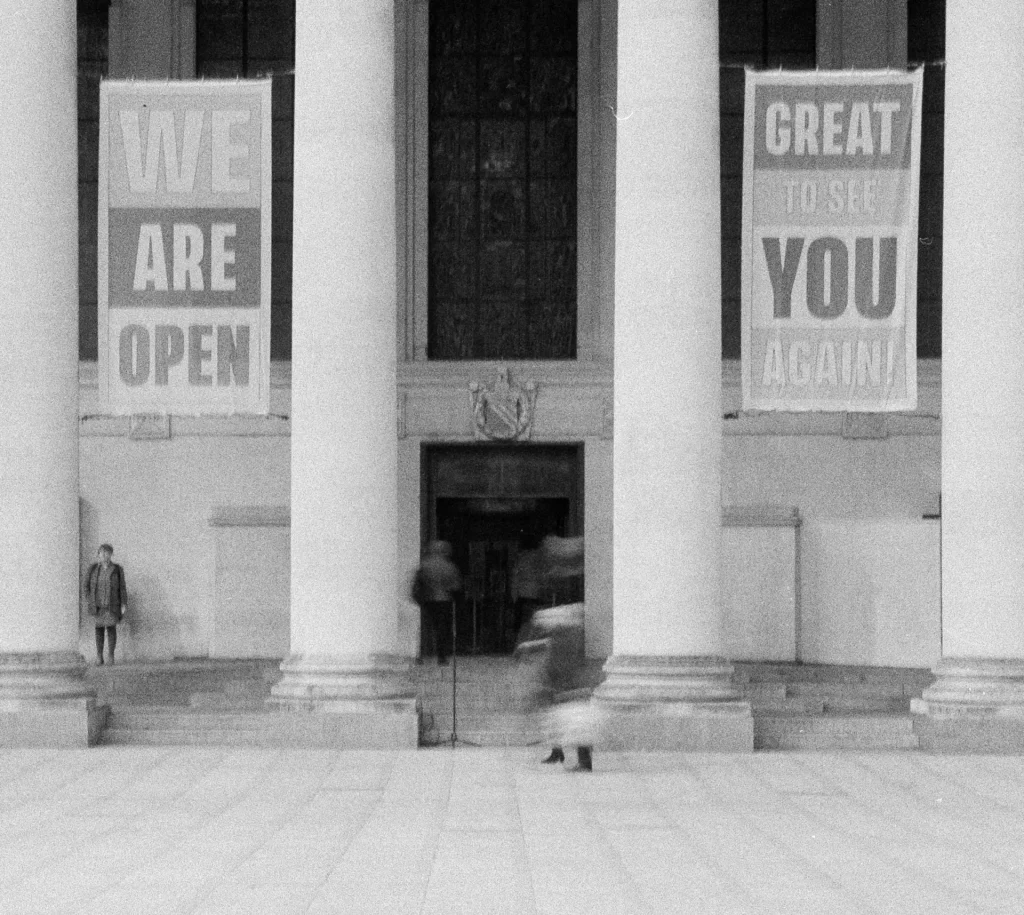
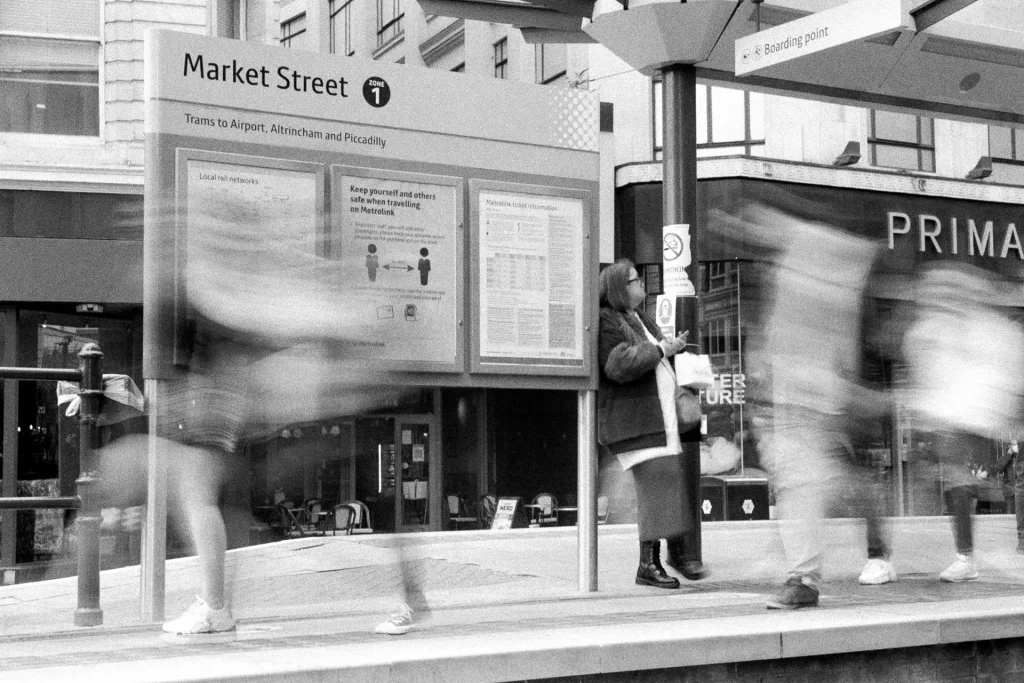
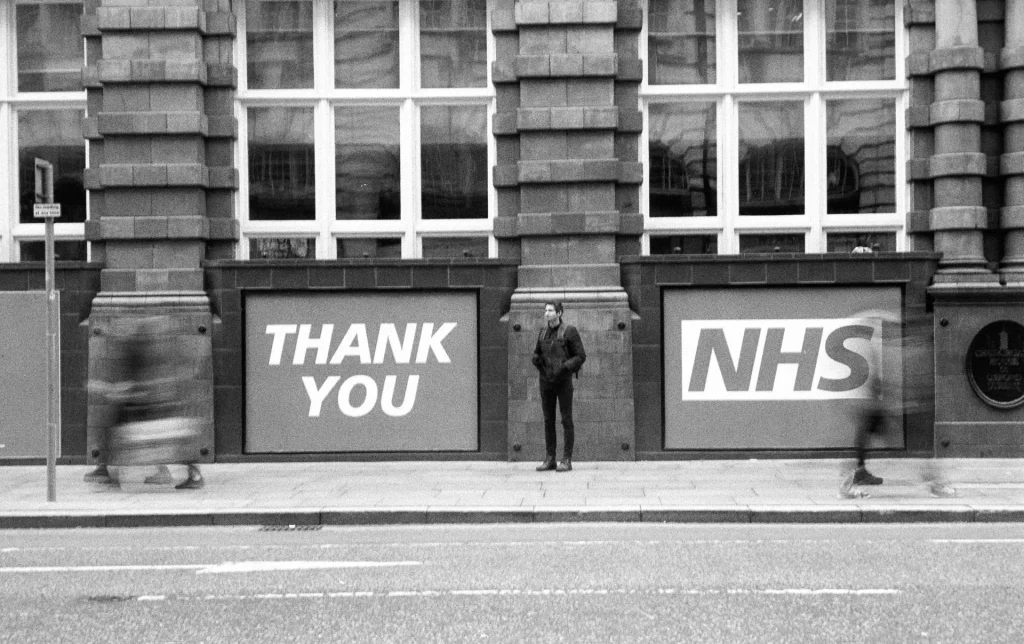
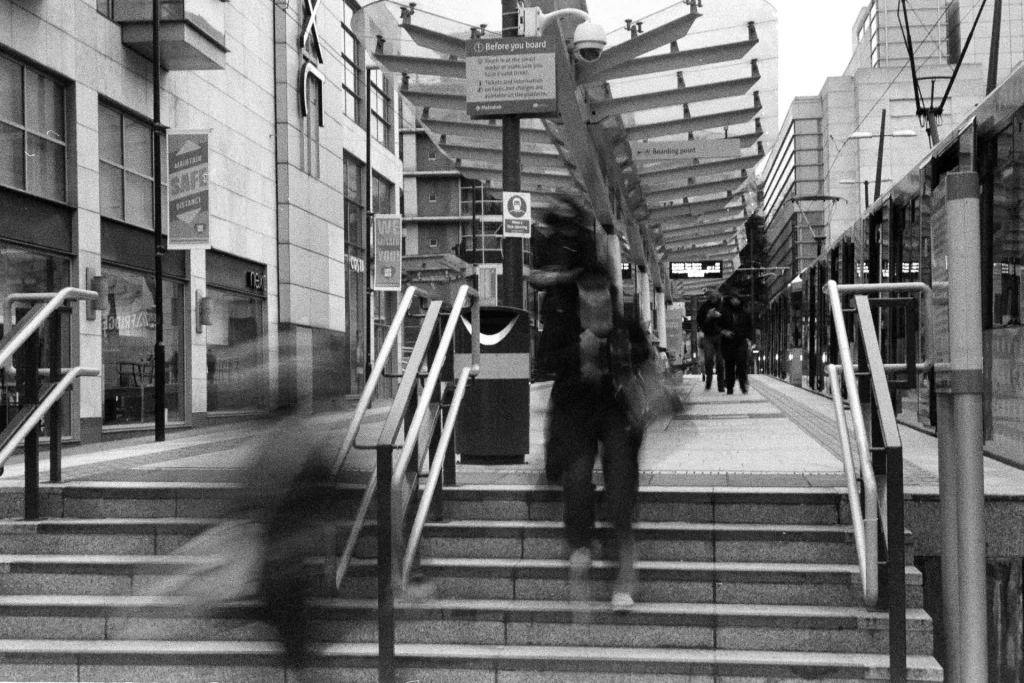
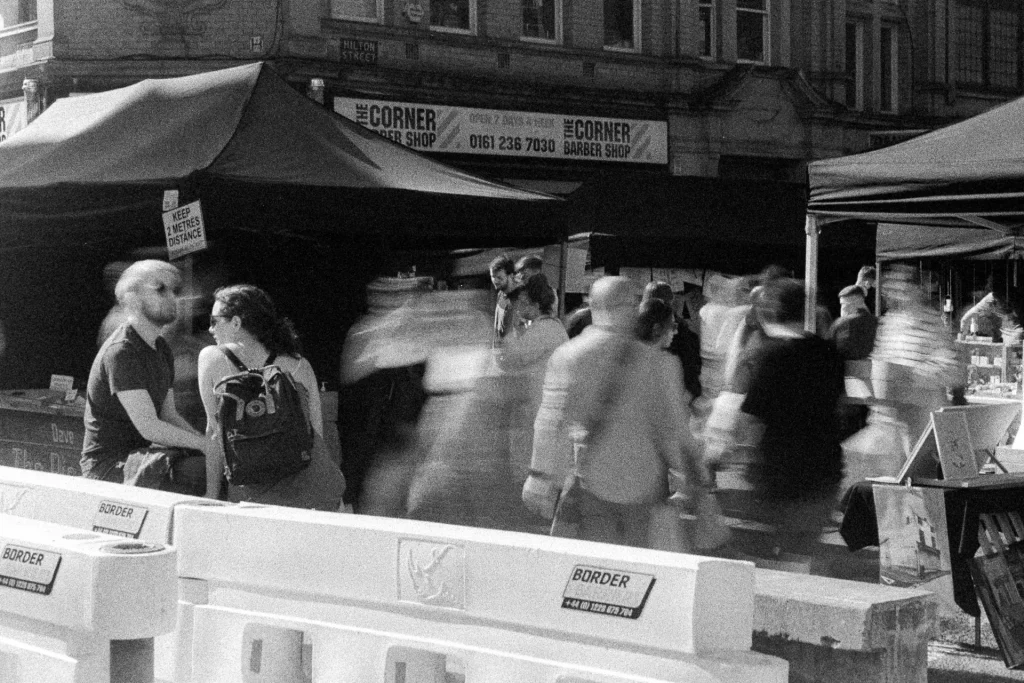
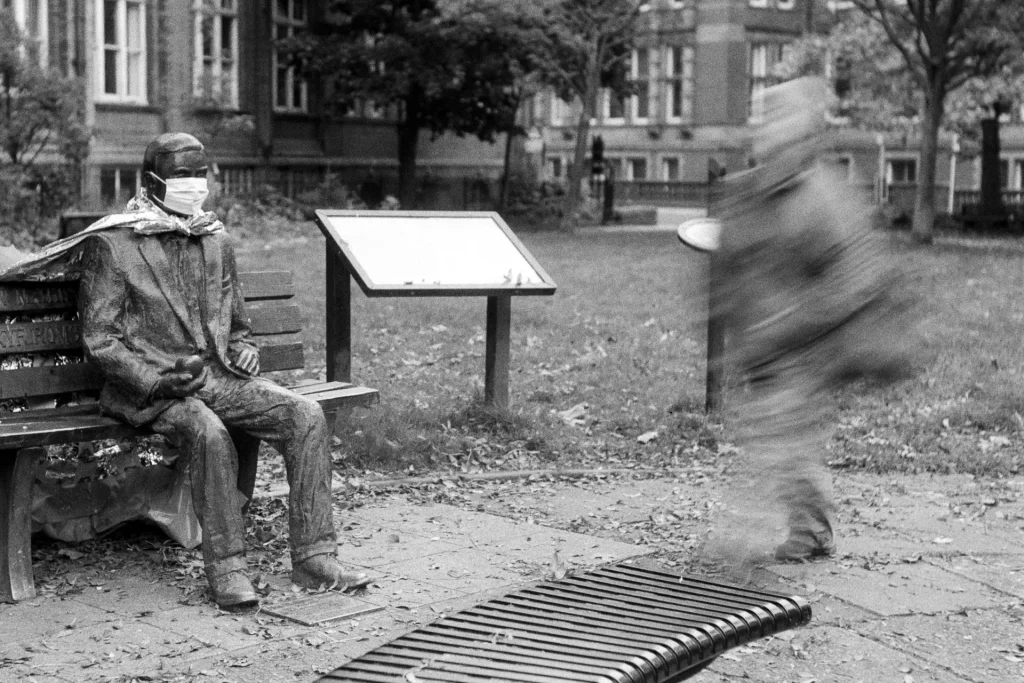
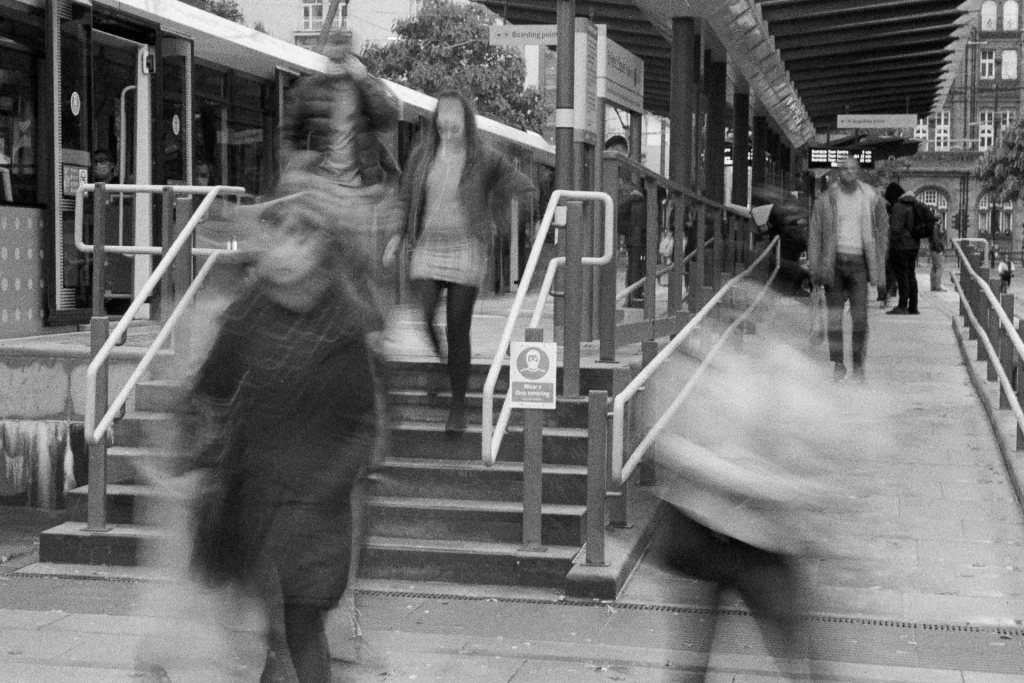
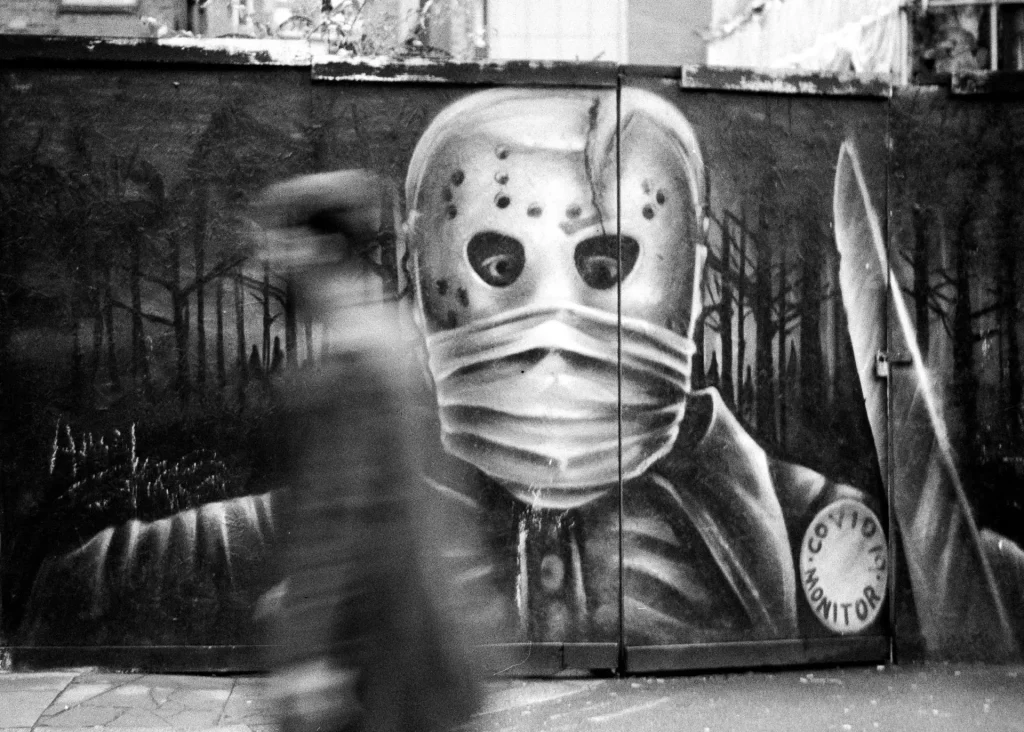
Thank you for reading my article, I hope that you found it interesting. I intend to continue with this project, and learning lessons, probably until Covid-19 ceases to affect our lives. The ongoing challenge is to find more ways to represent the pandemic within similar photographs.
To see more of my photography please visit my Instagram: amicablephotography
Share this post:
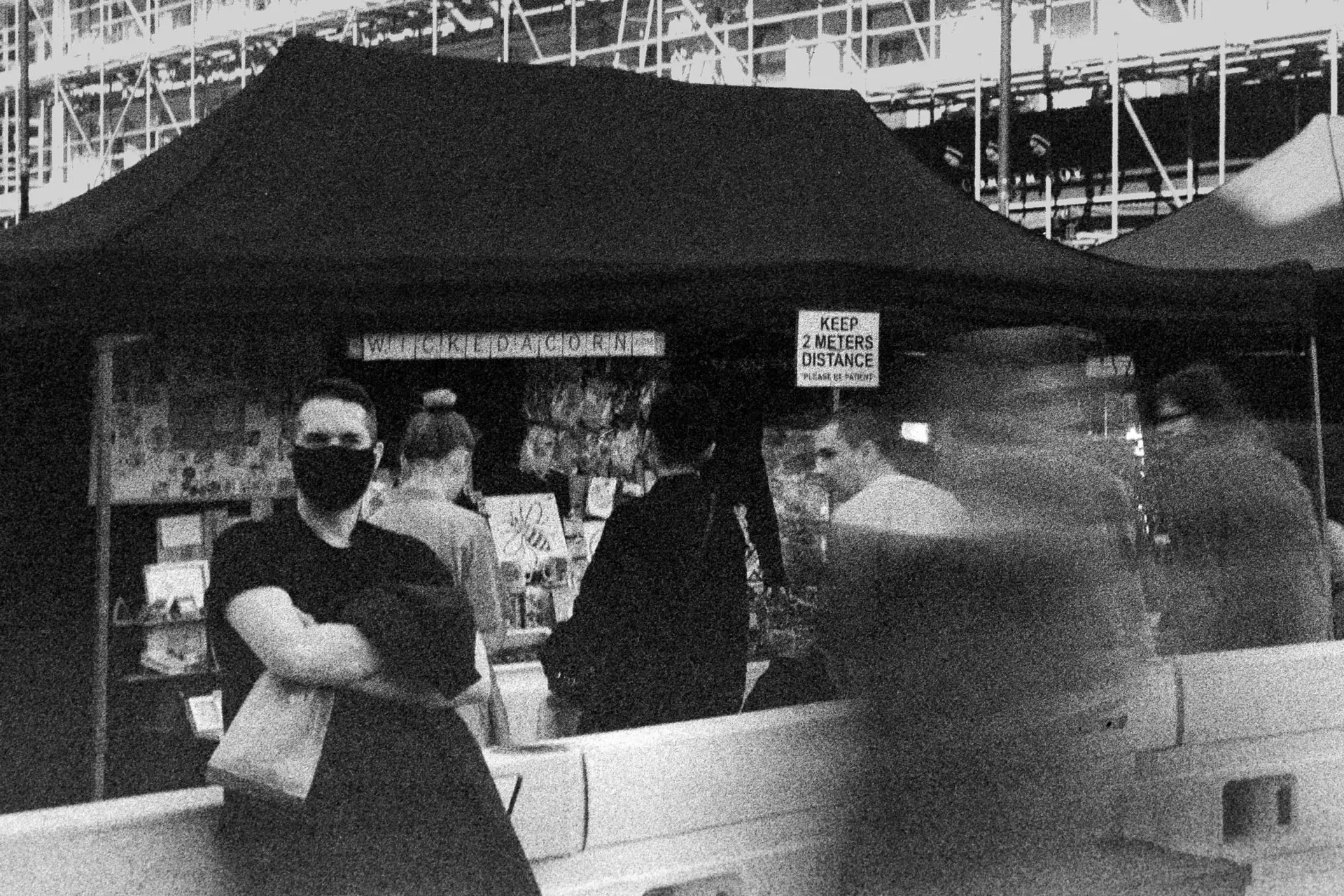








Comments
tom on Ghosts of Covid – A Photography Project – By Mike Beard
Comment posted: 14/02/2021
Comment posted: 14/02/2021
Rock on Ghosts of Covid – A Photography Project – By Mike Beard
Comment posted: 14/02/2021
Comment posted: 14/02/2021
Brian nicholls on Ghosts of Covid – A Photography Project – By Mike Beard
Comment posted: 14/02/2021
Comment posted: 14/02/2021
Peggy on Ghosts of Covid – A Photography Project – By Mike Beard
Comment posted: 14/02/2021
Comment posted: 14/02/2021
Huss on Ghosts of Covid – A Photography Project – By Mike Beard
Comment posted: 14/02/2021
Comment posted: 14/02/2021
Alex Vye on Ghosts of Covid – A Photography Project – By Mike Beard
Comment posted: 14/02/2021
Comment posted: 14/02/2021
Mat on Ghosts of Covid – A Photography Project – By Mike Beard
Comment posted: 15/02/2021
On the subject of "less is more" have you considered increasing your exposure times into minutes rather than reducing the number of people in your composition?
Alexey Titarenko made some long exposure photos of St Petersburg in which the people are reduced to a flowing mass.
Thanks for sharing your work here as well, it's a nice article!
Comment posted: 15/02/2021
Castelli Daniel on Ghosts of Covid – A Photography Project – By Mike Beard
Comment posted: 20/02/2021
What a great, original and creative idea! You made that whole lemons/lemonade tale work. I also love the fact you shot the series on a somewhat dicey camera. Great post to read on a snowy New England day while putting off using the snowblower again!
Comment posted: 20/02/2021
Castelli Daniel on Ghosts of Covid – A Photography Project – By Mike Beard
Comment posted: 23/02/2021
Anytime you want to pop over the pond and photograph grumpy New Englanders moving snow, give me a shout! Free room & board and I’ll even let you waltz with the machine!
-Dan